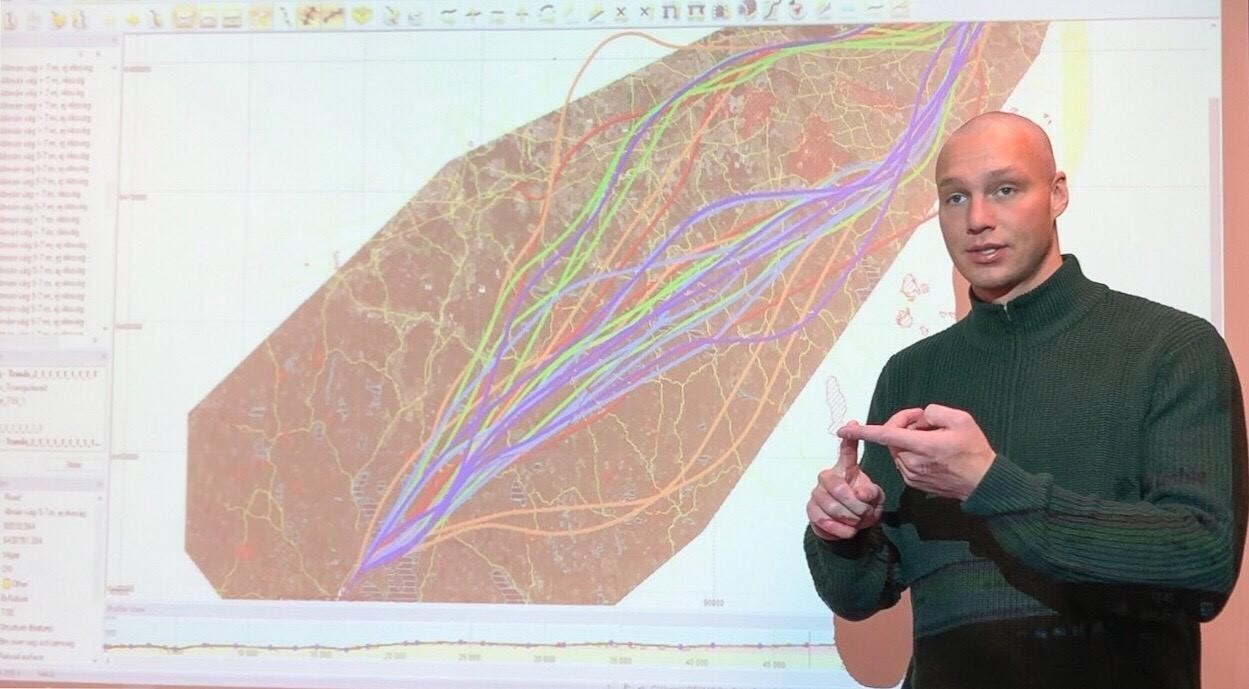Atkins Sweden uses Trimble Quantm in a new high-speed railway project

Atkins Sweden applies Trimble Quantm to find and evaluate optimal corridors for the new high-speed railway network the East Link Project (Ostlänken) through Linköping.
The East Link Project is part of the planned high-speed railway network connecting Stockholm, Göteborg and Malmö. Atkins’ role in the project is to perform a localization study of the railway passage through Linköping. This part of the railway network is the southernmost part of Ostlänken.
“One of the biggest challenges is finding the best available connection to the next part of the planned high-speed railway link,'' says Mark Lidback, Railway Designer at Atkins Sweden. “How Ostlänken ends and where the station in Linköping is positioned influence the next part of the railway network, Linköping – Borås. This ensures that we have a lot of different scenarios that we need to analyse, and this would be a challenging task to handle without an analysis tool like Quantm.”

Hanna Francke, Project Manager at Atkins Sweden, points to the fact that every single alternative you investigate must be comparable. This means that the alternatives need to have the same starting point, the same geometrical requirements or the same design speed criteria. Trimble Quantm is an alignment planning solution that can calculate and optimize alignments and corridors by performing a multi-criteria analysis.
Transforming the way we work
“Traditionally a localization study is performed by first looking at a number of plausible different alternatives, and designing rough drafts of these to get volumes, surfaces and uncover the need for bridges and tunnels. Second, cost calculations are performed manually to compare these alternatives.”
With Quantm, this process is automated, making it very easy to test different scenarios and see how changes to the basic data input affect the scenario analyses. Lidback explains how Quantm has transformed the way he works stating, “I strongly believe that we wouldn’t be able to perform a study of this magnitude without using Quantm”.
“We generate the correct information at an early stage which allows us to proceed with the project in the right direction. If we discover that there is not a great need for structures such as bridges, we do not need to devote much effort towards this, but rather focus on factors that will have a greater impact on the project”. Lidback continues, “Already during the startup meeting, we can compare different alternatives in terms of for example costs or CO2 emissions and decide which corridors we deem most effective.”
One of the greatest benefits of Quantm is that it provides the possibility to test a number of different scenarios in a short amount of time. This enables users to fairly quickly analyze and compare scenarios and see how other project stakeholders’ plans and requirements impact the different scenarios. Examples of such considerations are municipal planning and changes made to the design criteria during the project.
Quantm easily handles data that traditionally is hard to quantify. Examples of such data are CO2 emissions, noise impact, land acquisition and national interests. “We level the playing field for different considerations and impacts, and allow for more of our stakeholders’ concerns and interests to be considered in calculating and evaluating different corridors. This allows for more stakeholders to get their points into the calculation [..] When it comes to the East Link Project, it is municipal planning and changes to the speed of the high-speed railway that have the greatest impact” says Lidback.